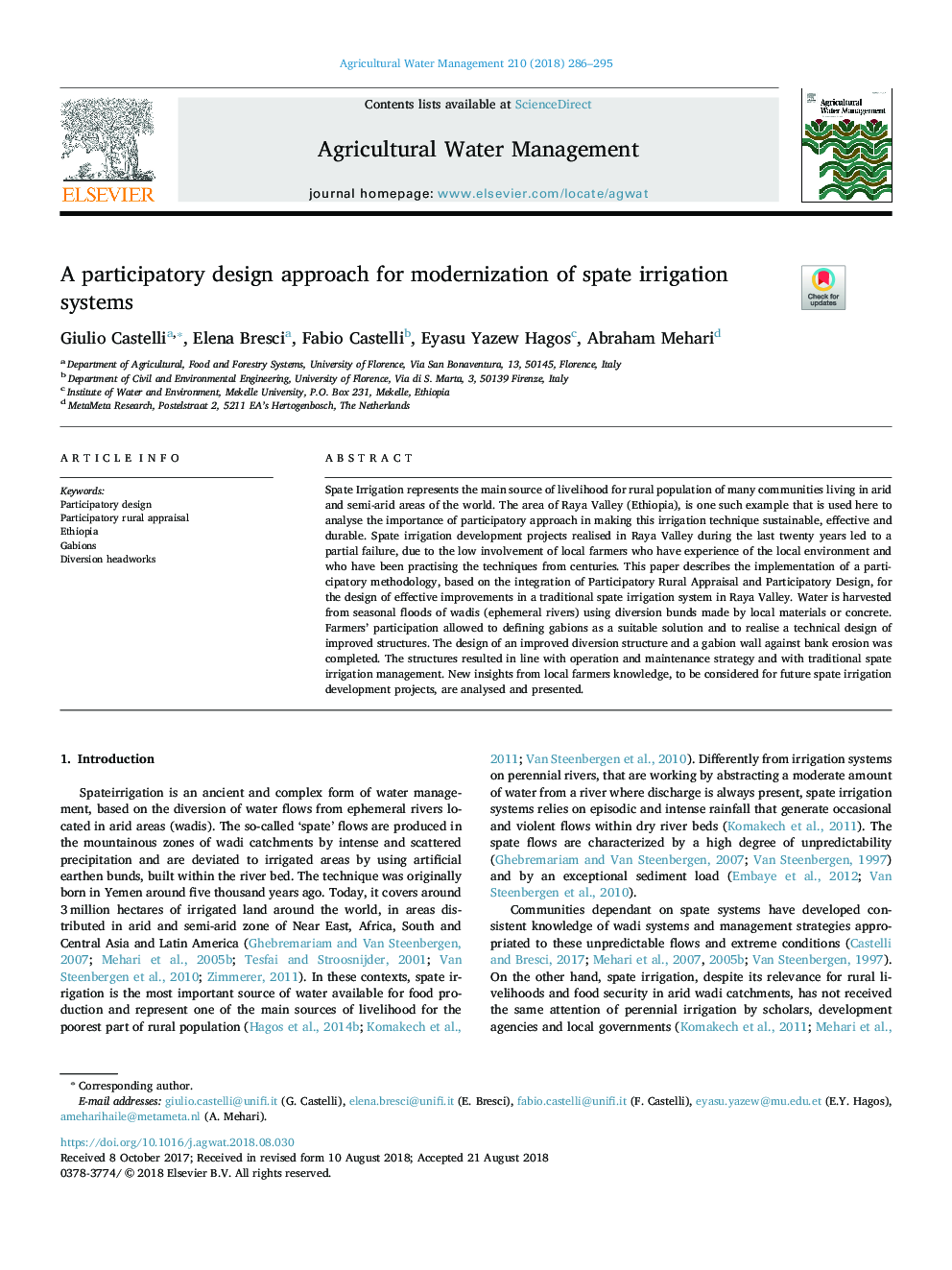| Article ID | Journal | Published Year | Pages | File Type |
|---|---|---|---|---|
| 10115921 | Agricultural Water Management | 2018 | 10 Pages |
Abstract
Spate Irrigation represents the main source of livelihood for rural population of many communities living in arid and semi-arid areas of the world. The area of Raya Valley (Ethiopia), is one such example that is used here to analyse the importance of participatory approach in making this irrigation technique sustainable, effective and durable. Spate irrigation development projects realised in Raya Valley during the last twenty years led to a partial failure, due to the low involvement of local farmers who have experience of the local environment and who have been practising the techniques from centuries. This paper describes the implementation of a participatory methodology, based on the integration of Participatory Rural Appraisal and Participatory Design, for the design of effective improvements in a traditional spate irrigation system in Raya Valley. Water is harvested from seasonal floods of wadis (ephemeral rivers) using diversion bunds made by local materials or concrete. Farmers' participation allowed to defining gabions as a suitable solution and to realise a technical design of improved structures. The design of an improved diversion structure and a gabion wall against bank erosion was completed. The structures resulted in line with operation and maintenance strategy and with traditional spate irrigation management. New insights from local farmers knowledge, to be considered for future spate irrigation development projects, are analysed and presented.
Related Topics
Life Sciences
Agricultural and Biological Sciences
Agronomy and Crop Science
Authors
Giulio Castelli, Elena Bresci, Fabio Castelli, Eyasu Yazew Hagos, Abraham Mehari,
